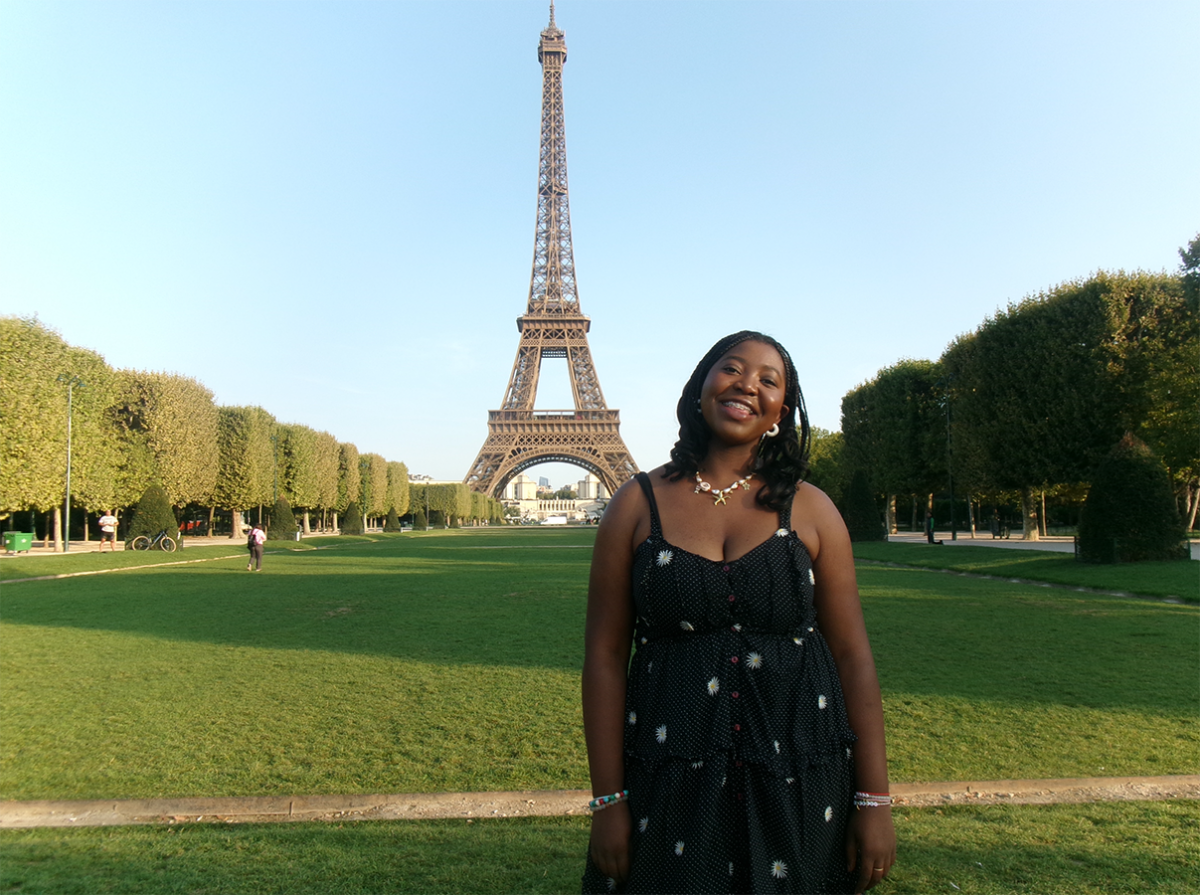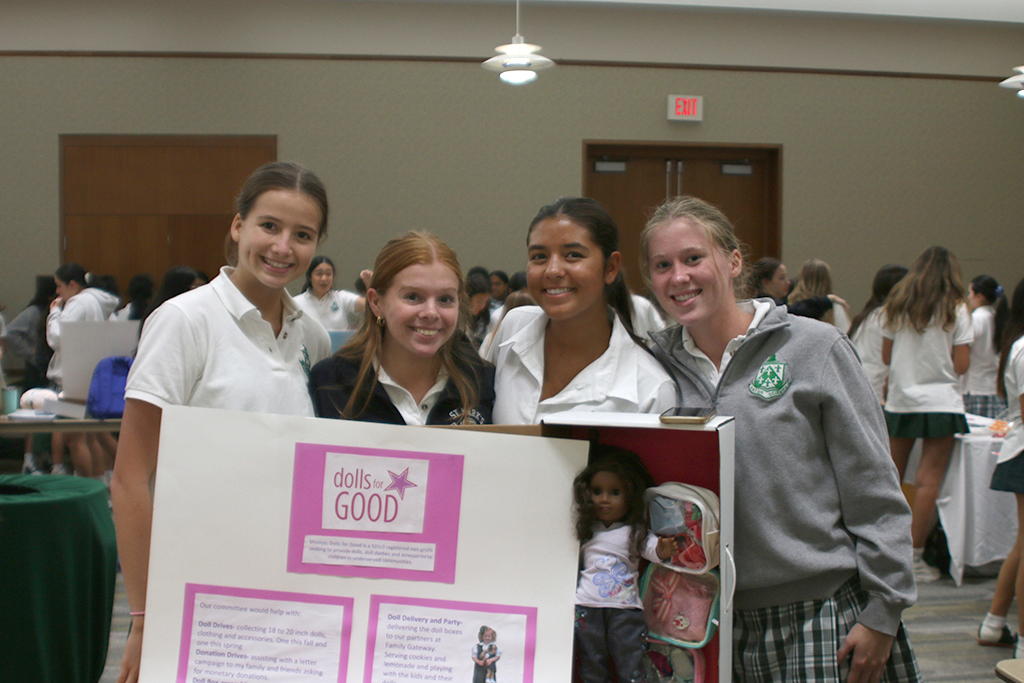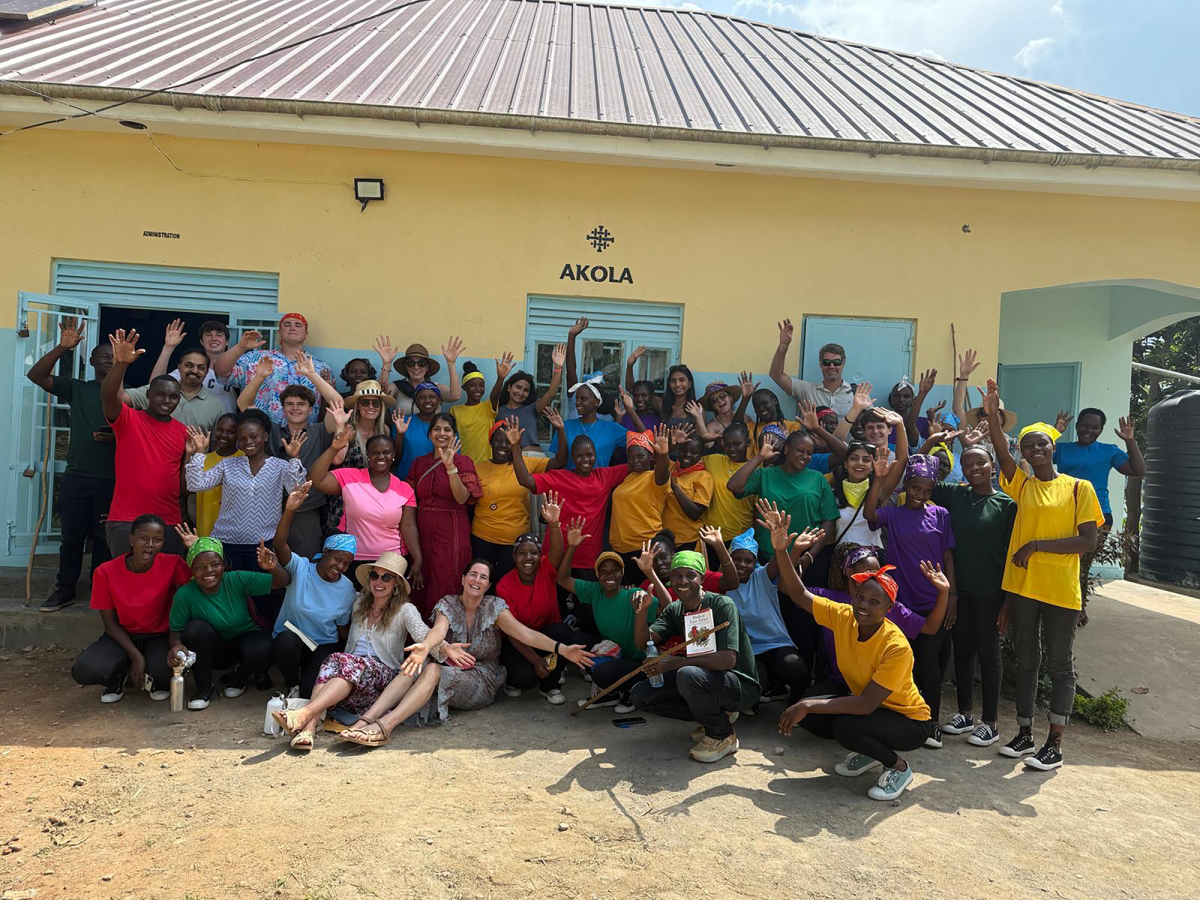MID-AUTUMN FESTIVAL
Senior Rayna Li celebrated the Mid-Autumn Festival, known as the Moon Festival, with family.
“We went to Costco and bought mooncakes, and my mom got Chinese takeout,” Li said. “The moon was really pretty that day, so we went outside to look at it.”
Li, who is co-president of the Asian Student Association (ASA) said the holiday, which fell on Sept. 17 this year, happened too early to celebrate at school.
“I hope we can do something next year– maybe giving out mooncakes and talking about the history of the festival,” Li said.
Despite the early timing of the festival this year, Li hopes to keep the spirit of the festival alive within the school community.
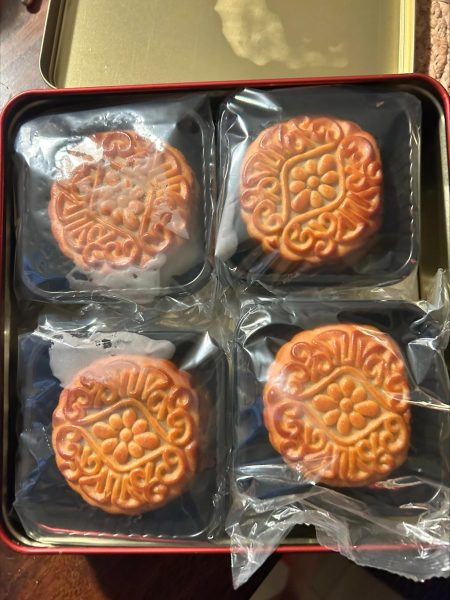
“Typically, it is celebrated when the moon is at its fullest, and that is the 15th day of the eighth month in the lunar calendar, which is different from the solar calendar, which is the January to December that we all know,” Li said. “So, the lunar calendar is based on the moon which is usually like August 15 in the lunar calendars, when the moons are fullest. So, people in Chinese culture celebrate it by getting together with family and eating mooncakes.”
A traditional Cantonese mooncake is a small round pastry with sweet, thick filling, often made of lotus seed or red bean paste, surrounded with a thin crust. Many also contain yolk from salted duck eggs. The pastries are often eaten with tea, and it is customary for families to gift boxes of mooncakes to relatives and coworkers. Li said the celebration is one of the most important holidays in Chinese culture with a story behind it.
“The Mid-Autumn Festival is a celebration that’s celebrated in Chinese culture. It’s based off of a legend called Chang’e, the Moon Goddess,” Li said.
Throughout the holiday, families reflect on the legend’s themes of gratitude, unity and renewal as they come together to admire the full moon.
DIWALI
Senior Dithyae Devesh, Hindu Student Union (HSU) co-president, annually celebrates Diwali, a holiday steeped in tradition and celebrating the triumph of light over darkness, with family and friends.
“The biggest thing about Diwali is definitely putting up lights in your house, setting up firecrackers, just making everything bright,” Devesh said. We also throw huge parties and hold gatherings within people’s homes, but in private, we do puja prayer and worship. Sweet foods, such as laddus and barfi, are also integral to Diwali when we eat and offer them to gods.”
Senior Anya Ahuja, a co-president of South Asian Student Association and a fellow celebrator, also finds Diwali a time to deepen her connections with community and faith.
“A lot of food, a lot of prayers, a lot of light, a lot of rangoli art and diya candle decorating,” Ahuja said. “It’s a time for me to connect deeper with the people around me and get closer to my religion, as I’m Hindu.”
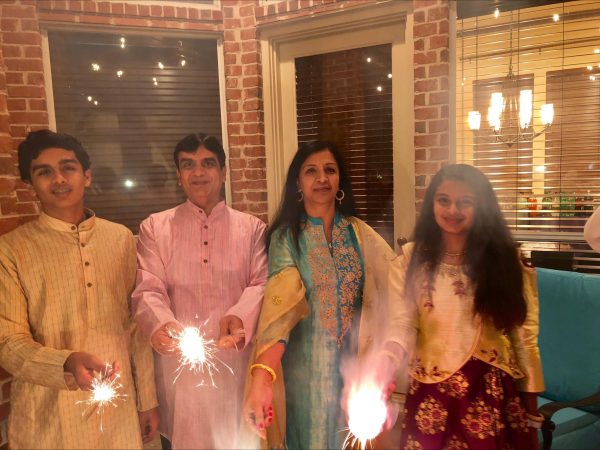
Throughout the festival, which is typically celebrated in late October or early November, Ahuja and Devesh decorate their houses with light and color through rangoli, engage in spiritual reflection and feast on scrumptious homemade food.
“Diwali is such a special time because the victory of good over evil is a very general theme that anyone can resonate with and celebrate,” Ahuja said. “While many religions and cultures have different Diwali origin stories and worship different gods during it, it’s a universal time of community.”
Though Hockaday hasn’t yet celebrated Diwali with an official event, there are typically tables with traditional accessories, religious figurines and informational pamphlets around the school, created by SASA and HSU members. In 2023, SASA also hosted a small get-together with some St. Mark’s students. Though it wasn’t hosted in 2024, Ahuja expressed hope to revive it in the future.
“It was a huge hit and it’d be great to do it again sometime,” Ahuja said. “I’m grateful to be in a school that celebrates my culture and gives me a platform to create a better community for my peers.”
ROSH HASHANAH & YOM KIPPUR
Senior Grey Golman, Jewish Student Union co-president and Affinity Council representative, spends the first half of October celebrating Rosh Hashanah and Yom Kippur with her family.
“The days between Rosh Hashanah and Yom Kippur and the holidays themselves are a time of prayer, forgiveness and deep reflection,” Golman said. “Rosh Hashanah symbolizes the start of the Jewish new year and Yom Kippur is the restart of the Torah, both following the ancient Hebrew calendar.”
Though Rosh Hashanah and Yom Kippur are both integral Jewish celebrations and times of reflection, their traditions and routines differ slightly.
“During Yom Kippur, we fast and abstain from using technology,” Golman said. “Throughout the day, my family and I usually attend services at our synagogue and pray together at home.”
Meanwhile for Rosh Hashanah, the practices are a little less solemn, though they still emphasize personal meditation, prayer and time at home.
“During Rosh Hashanah, we eat apples and honey and braid challah, which symbolizes the circularity of the year,” Golman said. “Celebrating time with family is a huge part of Rosh Hashanah.”
Though there won’t be a school celebration for these holidays, JSU hosted their first inter-group Rosh Hashanah celebration earlier in the year.
“It was a festive way to celebrate together and bond, and though I won’t be here next year, I hope JSU’s future leaders carry that on,” Golman said.
Golman’s favorite part of this festive time is having her community together, as well as how it brings her closer to her faith.
“Having all my extended family over and seeing certain synagogue members who I don’t usually get to talk to all in one place is really amazing,” Golman said. “This time helps me reflect on how my religion connects to my life and identity, as well as making my best self.”
DAY OF THE DEAD
Senior Gabriela Gaona, Latin-Hispanic Student Union (LHSU) president, prepares her ancestral altar, an ofrenda, days ahead of Day of the Dead, also known as Día de los Muertos, which is a Mexican holiday typically celebrated in November.
“I usually like to decorate my ofrenda the week before, especially because it takes me a while to gather all my photos and find all my things I want to put on it,” Gaona said. “That usually involves getting bread and flowers from the grocery store, finding picture frames, as well as many dining room conversations with my family about the people we’re honoring.”
To honor dead ancestors, families create displays, known as ofrendas, that feature photos, flowers, candles, and food as well as favorite items of the deceased. Families also visit the deceased’s graves, eat special foods such as sugar skulls and dress in vibrant costumes.
“I honor all my known ancestors, even some that I haven’t personally met,” Gaona said.
This year, Day of the Dead spanned November 1-2. Events in the Dallas area included a parade and festival at Dallas City Hall, a Dallas Symphony Orchestra concert and a Dallas Farmers’ Market themed day.
“Day of the Dead is a time of remembrance and gratitude for the lives people have lived,” Gaona said.
Though Hockaday did not have a Day of the Dead celebration, LHSU honored the various Latin countries’ respective Independence Days on Oct. 3, performing baile folklórico, a traditional Hispanic dance, for each division and providing Hispanic food and music for an Upper School dance party. Additionally, various members of LHSU spoke to the Hockaday community about their cultural heritage and what it means to them.
“It’s important to celebrate these holidays and honor those who came before us,” Gaona said.




